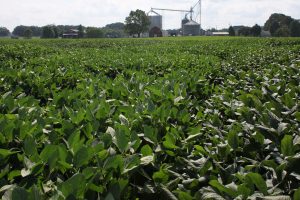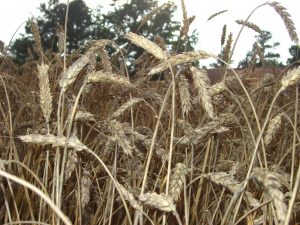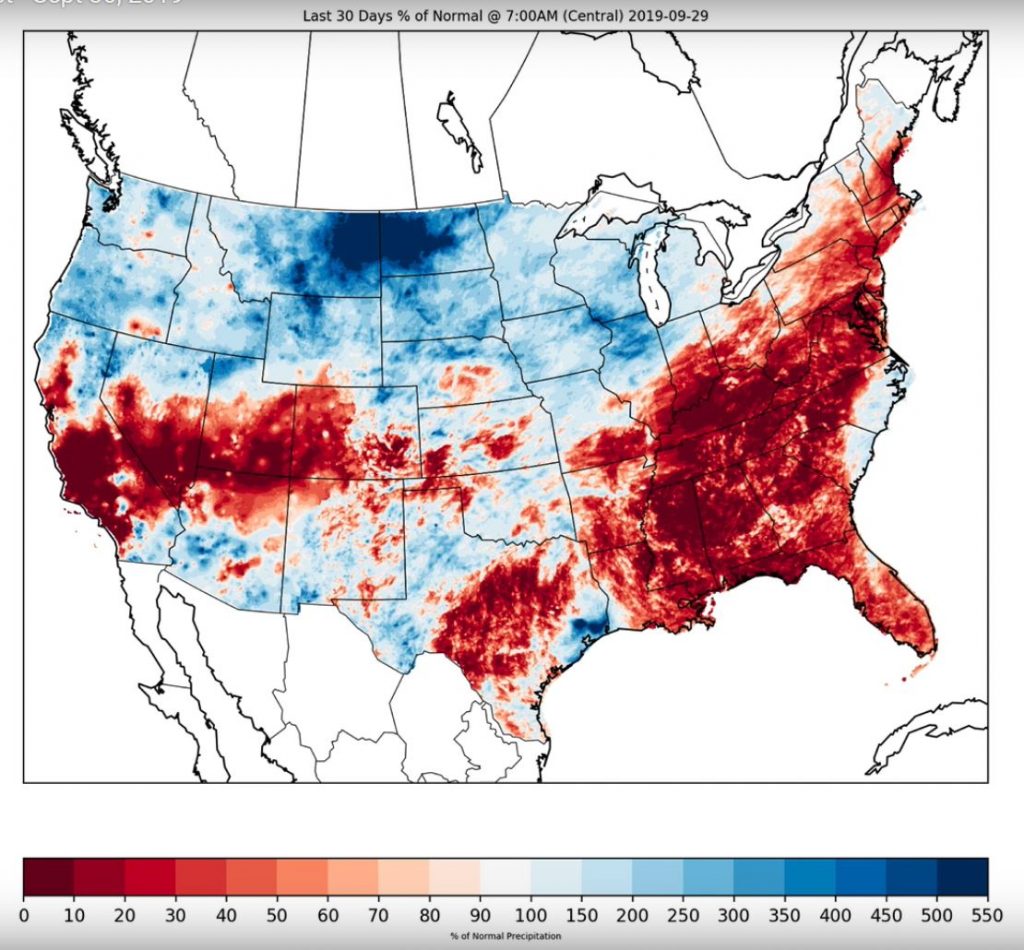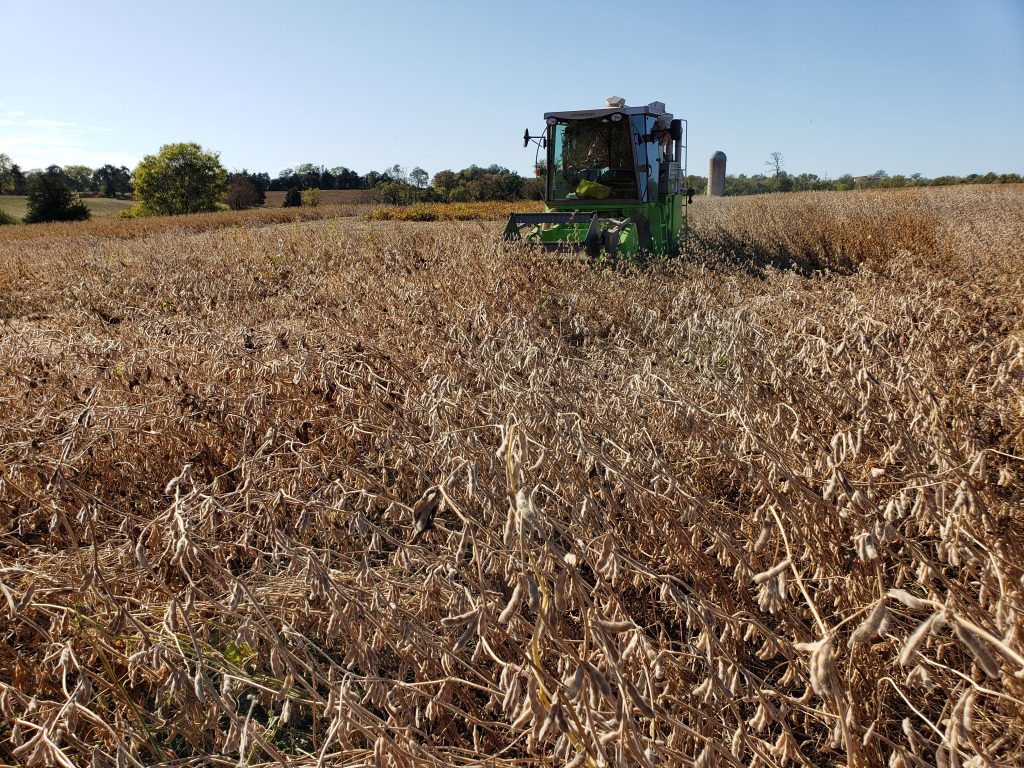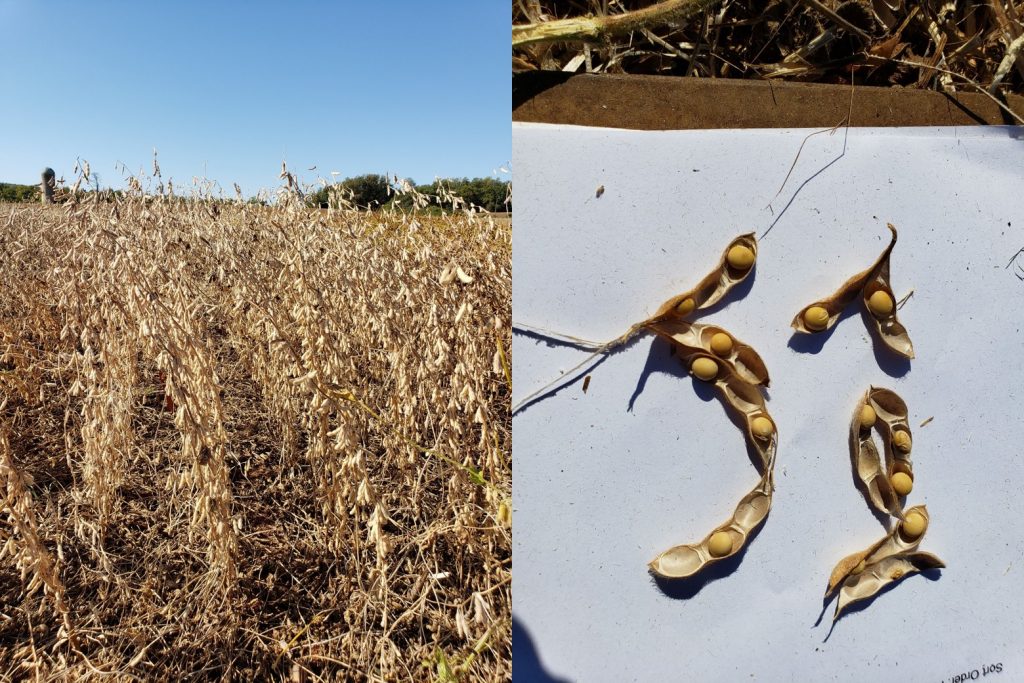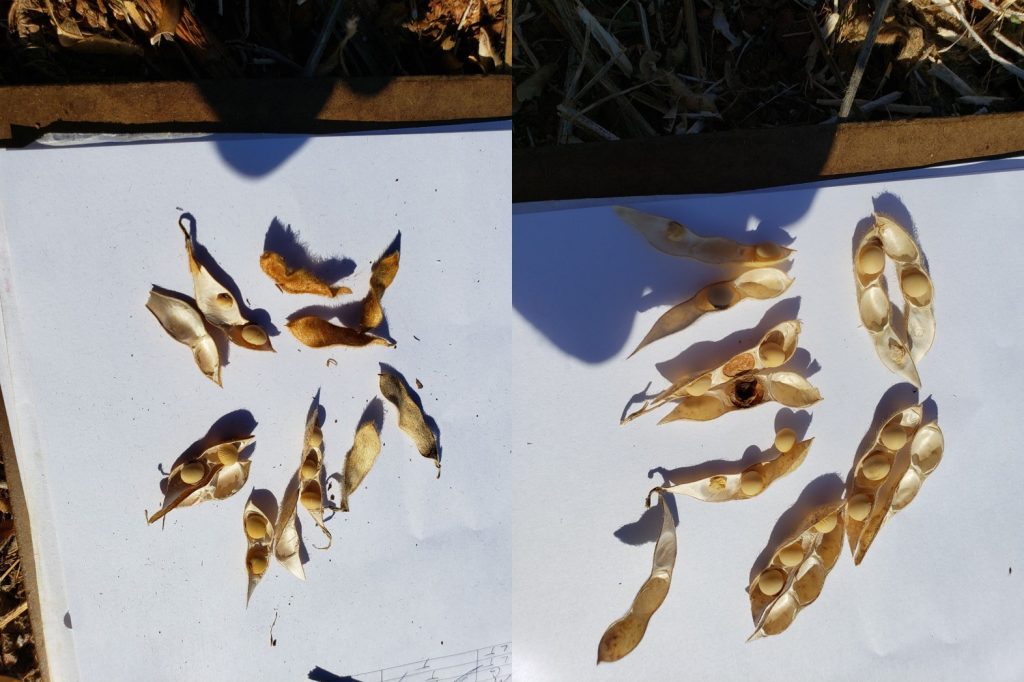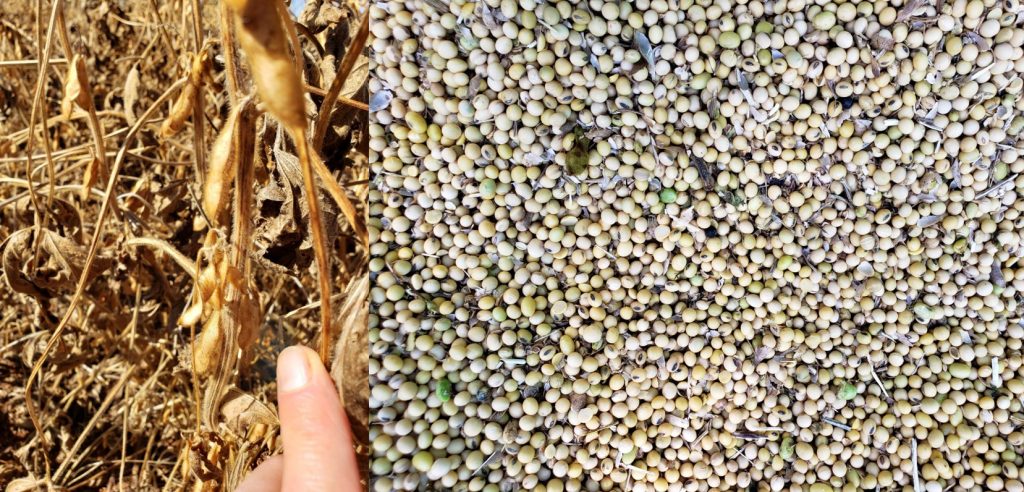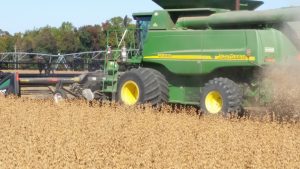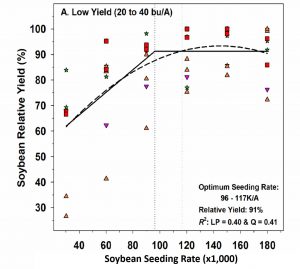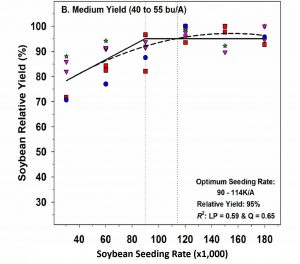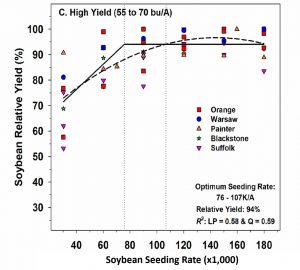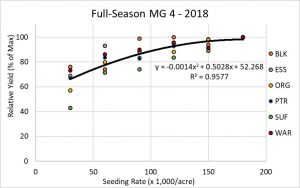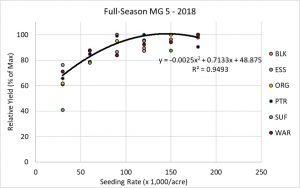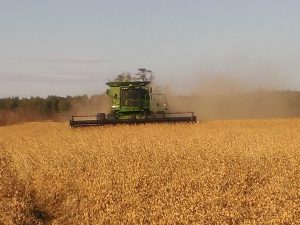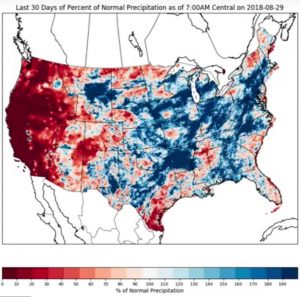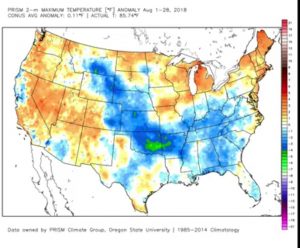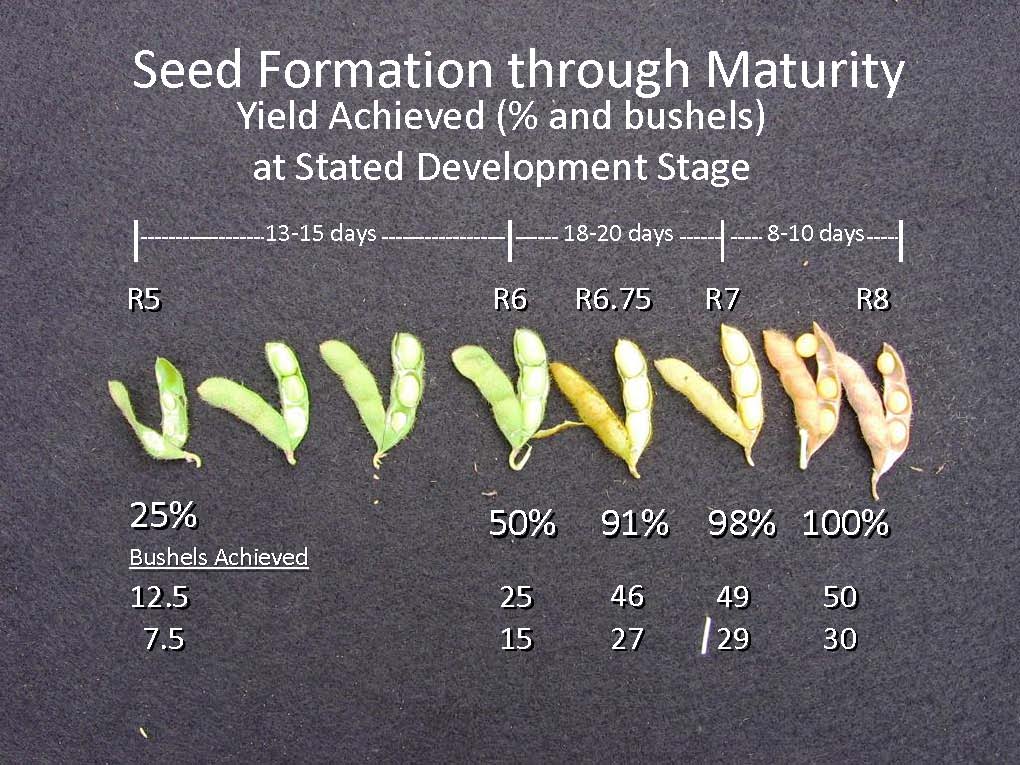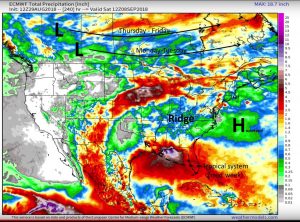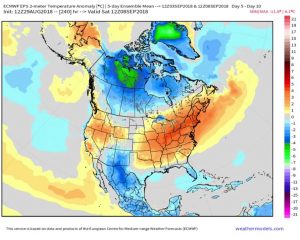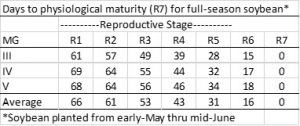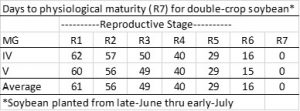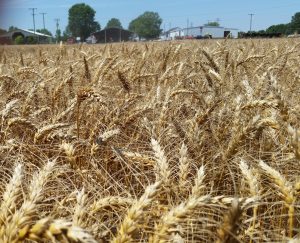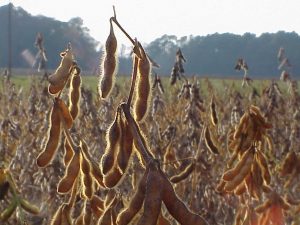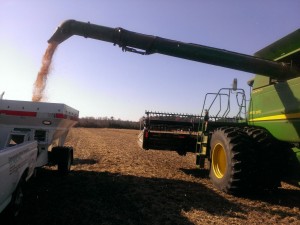Although it’s hard to accurately estimate soybean yields until maturity, doing so can give you an idea of your crops potential this year or differences between fields or soil types. Maybe you’re considering entering the soybean yield contest or maybe you just want some peace of mind.
Here are some general guidelines for estimating soybean yield. Again, estimating soybean yield is inaccurate unless detailed sampling is done late in the growing season. Estimates are usually not very good until the soybean approaches physiological maturity (R7). Only about 50% of the total seed dry matter has accumulated by the R6 development stage. Stresses during the R6 to R6.5 stages can result in large yield losses mostly by reduced seed size, but also by reduced pods or beans per pod. After R6.5, stresses will cause a much smaller loss.
To estimate yields, follow the steps below. Be sure to sample in 5 to 7 different areas of the field.
1. Determine the number of row feet needed to make 1/1000th of an acre from the table below. In narrow rows, one may use 3 or 4 side-by-side rows instead of one long row
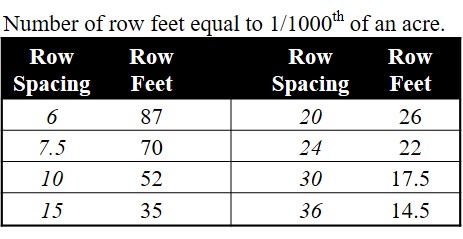
2. Determine the plant population per acre. Count the number of plants for the row feet determined above in 5 to 10 randomly chosen area of the field. Multiply this number by 1000. Average the number of sampling areas. Note that the more areas of the field that you sample, the more accurate are your estimates.
3. Determine the number of pods per plant. As you are making your stand counts, pull up 5 consecutive plants in the row you counting. These 5 plants should be growing next to each other. This will insure that you don’t just pull the best looking plants in the row. Also, try to avoid gaps in the row as the plant next to the gap will have more pods than the average plant. Count the number of pods on these plants within the sample area and average.
4. Determine the pods per acre. Multiply the plant population (step 2) by the pod average (step 3).
5. Determine the number of seeds per acre. Multiply the number of pods (step 4) by 2.5 seed per pod. This is an average number of seed per pod for most varieties. Some varieties may have more, some less.
6. Determine pounds of seed per acre. Divide the seeds per acre (step 5) by 3000 seeds per pound. This number can vary from 2500 to 3500. Higher numbers represent smaller seed that are more likely during late-season drought. Smaller numbers represent seed that form with abundant August/September rainfall. You may want to obtain a low, medium, and high estimate.
7. Determine the yield estimate. Divide the pounds per acre (step 6) by 60 pounds per bushel.
As an alternative to calculating your numbers, you can use the chart below to determine how many pods or seed per pod you would need at three different plant populations to obtain a certain yield.


